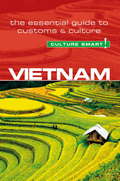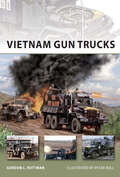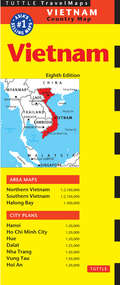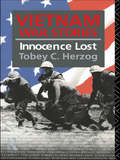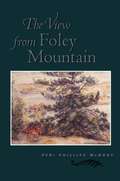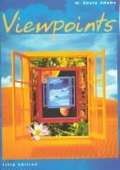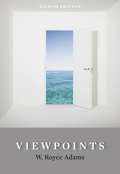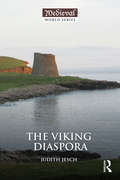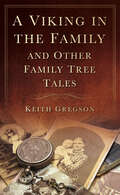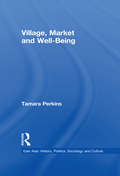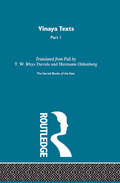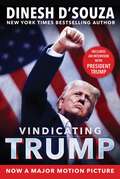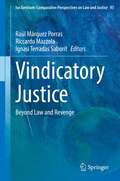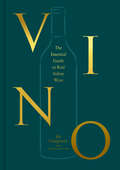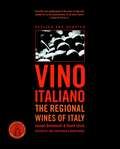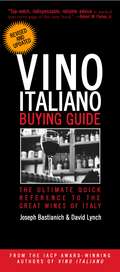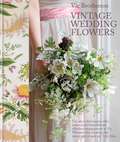- Table View
- List View
Vida 3.0
by Max Tegmark¿Cómo afectará la inteligencia artificial al crimen, a la guerra, a la justicia, al trabajo, a la sociedad y al sentido de nuestras vidas? Bienvenidos a la conversación más importante de nuestro tiempo. ¿Cómo afectará la inteligencia artificial al crimen, a la guerra, a la justicia, al trabajo, a la sociedad y al sentido de nuestras vidas? ¿Es posible que las máquinas nos dejen fuera de juego, remplazando a los humanos en el mercado laboral e incluso en otros ámbitos? ¿La inteligencia artificial proveerá mejoras sin precedente a nuestras vidas o nos dará más poder del que podemos manejar? Muchas de las cuestiones más fundamentales de la actualidad están íntimamente relacionadas con el aumento de la inteligencia artificial. Max Tegmark no se asusta ante la gama completa de puntos de vista o ante los temas más controvertidos, desde la superinteligencia hasta el significado, la conciencia y los límites físicos últimos de la vida en el cosmos. En Vida 3.0, clarifica los conceptos clave necesarios para hablar de inteligencia artificial al tiempo que ayuda a entender la importancia de las cuestiones clave, aquellas que la humanidad tendrá que abordar en las próximas décadas. Reseñas:«Todos nosotros, no solo científicos, industriales y generales, deberíamos preguntarnos qué puede hacerse ahora para aumentar las posibilidades de cosechar los beneficios de la IA futura y evitar sus riesgos. Esta es la conversación más importante de nuestro tiempo, y con este estimulante libro Tegmark te ayudará a participar en ella.»Stephen Hawking «Enriquecedor y visionario. Todo el mundo debería leerlo.»The Times «Tegmark explica con brillantez numerosos conceptos del terreno de la informática al de la cosmología, escribe con modestia y sutileza intelectual, le ofrece al lector el importante servicio de definir sus términos con claridad, y con razón rinde homenaje a las mentes creativas de los escritores de ciencia ficción que, por supuesto, abordaron este tipo de preguntas hace más de medio siglo.»Steven Poole, The Telegraph «Original, accesible y provocador. Tegmark ilumina las numerosas facetas de la inteligencia artificial. Disfruten del viaje y saldrán del otro extremo con una mejor apreciación de adónde podría llevarnos la tecnología en los próximos años.»Science «Una guía convincente por los retos y dilemas en nuestra búsqueda de un gran futuro de la vida, la inteligencia y la consciencia, en la Tierra y más allá de esta.»Elon Musk Estimulante. La discusión inteligente y desenfrenada de Tegmark conduce a fascinantes especulaciones sobre civilizaciones basadas en la inteligencia artificial que abarcan galaxias y eones. Absorbente.»Publishers Weekly
Vida 3.0
by Max Tegmark¿Cómo afectará la inteligencia artificial al crimen, a la guerra, a la justicia, al trabajo, a la sociedad y al sentido de nuestras vidas? Bienvenidos a la conversación más importante de nuestro tiempo. ¿Cómo afectará la inteligencia artificial al crimen, a la guerra, a la justicia, al trabajo, a la sociedad y al sentido de nuestras vidas? ¿Es posible que las máquinas nos dejen fuera de juego, remplazando a los humanos en el mercado laboral e incluso en otros ámbitos? ¿La inteligencia artificial proveerá mejoras sin precedente a nuestras vidas o nos dará más poder del que podemos manejar? Muchas de las cuestiones más fundamentales de la actualidad están íntimamente relacionadas con el aumento de la inteligencia artificial. Max Tegmark no se asusta ante la gama completa de puntos de vista o ante los temas más controvertidos, desde la superinteligencia hasta el significado, la conciencia y los límites físicos últimos de la vida en el cosmos. En Vida 3.0, clarifica los conceptos clave necesarios para hablar de inteligencia artificial al tiempo que ayuda a entender la importancia de las cuestiones clave, aquellas que la humanidad tendrá que abordar en las próximas décadas. Reseñas:«Todos nosotros, no solo científicos, industriales y generales, deberíamos preguntarnos qué puede hacerse ahora para aumentar las posibilidades de cosechar los beneficios de la IA futura y evitar sus riesgos. Esta es la conversación más importante de nuestro tiempo, y con este estimulante libro Tegmark te ayudará a participar en ella.»Stephen Hawking «Enriquecedor y visionario. Todo el mundo debería leerlo.»The Times «Tegmark explica con brillantez numerosos conceptos del terreno de la informática al de la cosmología, escribe con modestia y sutileza intelectual, le ofrece al lector el importante servicio de definir sus términos con claridad, y con razón rinde homenaje a las mentes creativas de los escritores de ciencia ficción que, por supuesto, abordaron este tipo de preguntas hace más de medio siglo.»Steven Poole, The Telegraph «Original, accesible y provocador. Tegmark ilumina las numerosas facetas de la inteligencia artificial. Disfruten del viaje y saldrán del otro extremo con una mejor apreciación de adónde podría llevarnos la tecnología en los próximos años.»Science «Una guía convincente por los retos y dilemas en nuestra búsqueda de un gran futuro de la vida, la inteligencia y la consciencia, en la Tierra y más allá de esta.»Elon Musk Estimulante. La discusión inteligente y desenfrenada de Tegmark conduce a fascinantes especulaciones sobre civilizaciones basadas en la inteligencia artificial que abarcan galaxias y eones. Absorbente.»Publishers Weekly
Vietnam - Culture Smart!
by Geoffrey MurrayCulture Smart! provides essential information on attitudes, beliefs and behavior in different countries, ensuring that you arrive at your destination aware of basic manners, common courtesies, and sensitive issues. These concise guides tell you what to expect, how to behave, and how to establish a rapport with your hosts. This inside knowledge will enable you to steer clear of embarrassing gaffes and mistakes, feel confident in unfamiliar situations, and develop trust, friendships, and successful business relationships.Culture Smart! offers illuminating insights into the culture and society of a particular country. It will help you to turn your visit-whether on business or for pleasure-into a memorable and enriching experience. Contents include* customs, values, and traditions* historical, religious, and political background* life at home* leisure, social, and cultural life* eating and drinking* do's, don'ts, and taboos* business practices* communication, spoken and unspoken"Culture Smart has come to the rescue of hapless travellers." Sunday Times Travel"... the perfect introduction to the weird, wonderful and downright odd quirks and customs of various countries." Global Travel"...full of fascinating-as well as common-sense-tips to help you avoid embarrassing faux pas." Observer"...as useful as they are entertaining." Easyjet Magazine"...offer glimpses into the psyche of a faraway world." New York Times
Vietnam Gun Trucks
by Peter Bull Gordon RottmanWhen US combat units began arriving in Vietnam in mid-1965 they were initially based in coastal cities. Munitions and supplies were delivered by sea at ports to directly supply the newly arrived forces. It was not long before American units began to venture into the countryside to engage the VC in the areas they controlled. Many of these areas were well inland and forward bases had to be established. These bases had to be continuously supplied and required a great deal of tonnage. Supplies had to be transported overland from the coastal ports of Qui Nhon and Cam Ranh Bay at Bong Son, An Khe, Pleiku, Dalat, and Buon Ma Thuot. Later, more inland bases were established and more seaports opened. The logistical efforts expanded and it became a major effort to run convoys to these bases. Discover the history of the little-known but vitally important improvised vehicles, or 'gun trucks', that were developed in-theatre in Vietnam by the vehicle crews themselves to protect convoys from Viet Cong ambushes in this highly-detailed, fully-illustrated title from our popular New Vanguard series.From the Trade Paperback edition.
Vietnam Travel Map
by Periplus EditionsTheVietnam Travel Map from Periplus is designed as a convenient, easy-to-use tool for travelers. Designed to fit easily into a purse or pocket and created using durable coated paper, this map is made to open and fold multiple times, whether it's the entire map that you want to view or one panel at a time. Following highways and byways, this map will show you how to maneuver your way to banks, gardens, hotels, golf courses, museums, monuments, restaurants, churches and temples, movie theaters, shopping centers and more, including ALL the places you'll want to visit on your trip! This 8th edition area maps and city plans are scaled to: Northern Vietnam 1:2,100,000 Southern Vietnam 1:2,100,000 Halong Bay 1:300,000 Hanoi 1:20,000 Ho Chi Minh City 1:20,000 Hue 1:20,000 Dalat 1:25,000 Nha Trang 1:20,000 Vung Tau 1:50,000 Hoi An 1:20,000 Considered the number one publisher of maps for foreign tourists and travelers in Asia,Periplus Travel Maps cover most of the major cities and travel destinations in the Asia-Pacific region. The series includes an amazing variety of fascinating destinations, from the multifaceted subcontinent of India to the bustling city-state of Singapore and the 'western style' metropolis of Sydney to the Asian charms of Bali. All titles are regularly updated, ensuring they keep up with the considerable changes in this fast-developing part of the world. This extensive geographical reach and attention to detailmean thatPeriplus Travel Maps are the natural first choice for anyone traveling in the region.
The Vietnam War Handbook: US Armed Forces in Vietnam
by Andrew RawsonThe book covers everything from infantry, artillery, armour, special forces, riverine craft, intelligence, combat support and service units, to weapons and equipment, organisation, command and control, daily life and tours of duty, awards and medals. Films and books, memorials and the legacy of the Vietnam War in the USA and South East Asia are also covered.
Vietnam War Heroes (Ten True Tales)
by Allan ZulloTen true stories of real-life heroes of the Vietnam War!Twenty-eight soldiers--all but five badly wounded or dead in the first few minutes of a devastating ambush--are fending off 200 North Vietnamese soldiers. US platoon leader Lieutenant Hal Fritz shouts to his comrades, "We will never give up!"Dozens of severely wounded soldiers are trapped in a fog-shrouded outpost and under merciless attack by the enemy. No other medical helicopter pilot will dare attempt a rescue, except for Major Patrick Brady. These and other American heroes risked their lives serving their country in the Vietnam War. You will never forget their courageous true stories.
Vietnam War Stories: Innocence Lost
by Tobey C. HerzogThe Gulf War and its aftermath have testified once again to the significance placed on the meanings and images of Vietnam by US media and culture. Almost two decades after the end of hostilities, the Vietnam War remains a dominant moral, political and military touchstone in American cultural consciousness. Vietnam War Stories provides a comprehensi
The View From Foley Mountain
by Peri Phillips McquayMy feet are practising their steps, gauging the slipperiness of wet lichen on rock and sounding each landing. As my stride shifts to a swing I realize I have a sharper sense of my place in the woods now. I am as taut and limber as a bow-string. I sense bears in the woods, weigh their threat and move on, glorying in the mosses beneath my feet …. We in the woods share fear. By grace of my fear, I am closer to predators and prey. The View From Foley Mountain is a celebration of the joy of living in harmony with the natural world. The seasonal selections lead you through the fields, woods, rock outcroppings and shores of the conservation area which is the author’s home. You will savour the fragrance of maple syrup boiling, share in a summer heron census, snowshoe to a beaver lodge, watch a snapping turtle laying eggs, witness the death of a starving deer, and see turkey vultures soar. Whether she is rejoicing in old barns, canoeing the Snake River, harvesting dye plants or stalking moths at night, Peri Phillips McQuay’s deep love and lyrical vision stimulate you to share her sense of wonder in her surroundings.
Viewpoints: Readings Worth Thinking and Writing About (5th edition)
by W. Royce AdamsViewpoints, a thematically organized reader, offers diverse perspectives on various themes and issues, such as work, media, human behavior, and cultural heritage. With opening chapters of substantial writing and reading instruction and with writing assignments both at the end of each reading and on the Web, Viewpoints, is an ideal reader for honing writing and critical-thinking skills. Students love Viewpoints, for its helpful guidance, such as pre-reading techniques; methods on evaluating an essay for content, structure, and point-of-view; and advice on choosing good essay topics. The Sixth Edition now includes new opportunities for collaboration.
Viewpoints: Readings Worth Thinking and Writing About
by W. Royce AdamsSpark your interest in writing with VIEWPOINTS. This thematically organized reader offers diverse perspectives on various themes and issues, including social concerns, media, human behavior, cultural differences, and human rights. With opening chapters that include substantial writing and reading instruction and writing assignments both at the end of each reading and on the web, VIEWPOINTS takes writing and critical-thinking skills to the next level. This thoroughly revised Eighth Edition builds on the success of previous editions with twenty-four new readings, six new thought-provoking photographs, author biographies, and source information for every selection.
The Viking Diaspora (The Medieval World)
by Judith JeschThe Viking Diaspora presents the early medieval migrations of people, language and culture from mainland Scandinavia to new homes in the British Isles, the North Atlantic, the Baltic and the East as a form of ‘diaspora’. It discusses the ways in which migrants from Russia in the east to Greenland in the west were conscious of being connected not only to the people and traditions of their homelands, but also to other migrants of Scandinavian origin in many other locations. Rather than the movements of armies, this book concentrates on the movements of people and the shared heritage and culture that connected them. This on-going contact throughout half a millennium can be traced in the laws, literatures, material culture and even environment of the various regions of the Viking diaspora. Judith Jesch considers all of these connections, and highlights in detail significant forms of cultural contact including gender, beliefs and identities. Beginning with an overview of Vikings and the Viking Age, the nature of the evidence available, and a full exploration of the concept of ‘diaspora’, the book then provides a detailed demonstration of the appropriateness of the term to the world peopled by Scandinavians. This book is the first to explain Scandinavian expansion using this model, and presents the Viking Age in a new and exciting way for students of Vikings and medieval history.
A Viking in the Family: And Other Family Tree Tales
by Keith GregsonGenealogist Keith Gregson takes the reader on a whistle-stop tour of quirky family stories and strange ancestors rooted out by amateur and professional family historians. Each lively entry tells the story behind each discovery and then offers a brief insight into how the researcher found and then followed up their leads, revealing a range of chance encounters and the detective qualities required of a family historian. For example, one researcher discovered that his great-great-grandfather, as a child, was carried across the main street of West Hartlepool on the back of the famous tightrope walker Blondin. The Victorian newspaper report said that one of his nineteenth-century ancestors lost his leg in a Midlands coal-mining accident, and that the amputated leg was buried in the local cemetery - to be joined by the rest of him on his final demise. A Viking in the Family is full of similar unexpected discoveries in the branches of family trees.
Village, Market and Well-Being (East Asia: History, Politics, Sociology and Culture)
by Tamara PerkinsFirst published in 2002. Routledge is an imprint of Taylor & Francis, an informa company.
Villager Jim's Bobbin Robin
by Villager JimOver many years, Villager Jim has gained the trust of a number of special birds and animals who have gradually taken it as second nature that a member of their own small world is a large chap with a camera!Bobbin Robin and her friends have a huge social media audience, with tens of thousands of viewers following her weekly adventures from the RSPB and on Facebook.Bobbin the robin has now become rather adept at posing for Jim, perching on various platforms for wherever Jim sits in his garden.Open up the book to see the daily goings-on of these wildlife friends in some of Jims very best pictures taken in this beautiful setting. They illustrate the close relationship Jim has formed with Bobbin and her friends.Jims lively captions express the mood and spontaneous character of each individual shot and are an essential element of what makes his pictures so special.
Vinaya Texts: The Sacred Books Of The East Part Twenty
by F. Max MullerThis is a subset of F. Max Mullers great collection The Sacred Books of the East.
Vindicating Trump
by Dinesh D'SouzaDonald Trump is unquestionably the most unique and charismatic figure in American politics in a generation. Yet despite his familiarity on the public stage, he remains an enigmatic, mysterious figure. Not since Lincoln has a man drawn such intensely opposite responses, of love and hate, and even in Lincoln&’s case the intensity was over the issue of slavery. With Trump, the intensity is over the man. How can the same man inspire such radically opposite reactions, to the point that there are some who would take a bullet for him, and others who celebrate the would-be assassin who actually attempted to take his life? This is the Trump enigma. Then there are Republicans and moderates who seek to sidestep the enigma of Trump the man by saying, &“I don&’t like him, but I like his policies.&” Yet if Trump&’s critics are right that he is an aspiring tyrant, a dictator, something akin to Hitler circa 1933, it is the man—not the policies—that matter most. In an original, searching examination, bestselling author Dinesh D&’Souza considers the issue of tyranny in Vindicating Trump by asking key questions: Is Trump a tyrant, and would his election a second time imperil democracy and our constitutional system of government? If not—if he didn&’t do anything tyrannical in his term in office—then why do his critics say that about him? If Trump isn&’t the one imposing a tyrannical regime, then who is?D&’Souza makes the startling argument that Trump&’s critics accuse him of being a dictator—a Caesar—because Trump does possess the colossal dimensions of a Caesar. He could be a tyrant, if he wanted to. But he doesn&’t want to. Rather, he wants to use his immense charisma and power to mobilize the American people against the forces of tyranny and repression, coming from the Democrats and from the Left. This book—and the accompanying film in theaters this fall—is an unqualified defense and vindication of Trump. It makes the case for Trump &“as is,&” the man as well as the policies. It will rally and inspire Trump supporters and at the same time convince Americans who are ambivalent about Trump that he is the right &“wartime general&” for the perilous times we face in this country.
Vindicatory Justice: Beyond Law and Revenge (Ius Gentium: Comparative Perspectives on Law and Justice #93)
by Raúl Márquez Porras Riccardo Mazzola Ignasi Terradas SaboritThis volume offers a new theoretical approach to the analysis of the law/revenge binary, and attempts to dismantle the common idea of revenge as lacking any legal, moral or rational dimension. In contrast, the book puts forward a model of a complex system of justice—which it terms 'vindicatory'—wherein vendetta constitutes an authorized action, the core of which does not (just) lie in vengeance but also in settlement procedures for peace—or 'composition.' The first part of the book ("Vindicatory Justice: Conceptual Analyses and Forerunners") seeks to identify the nature of vindicatory justice and to shed light on the structure of so-called vindicatory systems. In turn, the second part ("Mapping Vindicatory Justice") illustrates, using examples gathered from a range of sociolegal contexts, the dynamic relationship between composition and authorized revenge in vindicatory systems. Taken as a whole, the volume shows that applying a longue durée historical perspective to the study of revenge systems allows us to clearly recognize composition and authorized revenge as features of the same legal system, even though one of them may seem predominant (or more eye-catching) than the other in certain cultural settings.
Vine's Complete Expository Dictionary of Old and New Testament Words: With Topical Index
by W. E. Vine Merrill UngerA Nelson exclusive. Study the meaning of biblical words in the original languages-without spending years learning Greek or Hebrew. This classic reference tool has helped thousands dig deeper into the meaning of the biblical text. Explains over 6,000 key biblical words. Includes a brand new comprehensive topical index that enables you to study biblical topics more thoroughly than ever before.
Vino: The Essential Guide to Real Italian Wine
by Joe Campanale Joshua David SteinThe Italian wine bible for a new generation—a superstar sommelier and restaurateur explores the dynamic world of contemporary Italian wine.&“Joe gives us the gift of learning about the ever-evolving landscape of the world&’s most soulful (and might I say favorite?) wine region.&”—Danny MeyerAcclaimed Italian wine expert, sommelier, winemaker, and restaurateur, Joe Campanale presents a comprehensive guide that is as transportive as it is deeply educational. Vino dives into the dynamic landscape of Italian wine today, where a new generation of winemakers is eschewing popular international styles, championing long-forgotten indigenous grapes, and adopting sustainable approaches best suited for their local climates. In an epic quest through Italy&’s 20 regions that takes readers from the steep hills of Valle d&’Aosta to the near-tropical climates of Sicily, Campanale uncovers and profiles the diversity of real Italian wine and the most exciting, game-changing producers in each area. Readers will leave with countless recommendations for exceptional winemakers and be armed with Campanale&’s empowering new rubric of quality (say goodbye to the Italian wine pyramid). Full of colorful stories, in-depth explorations of the modern craft, and stunning photography, Vino proves there's never been a better time to drink Italian wine.
Vino Italiano: The Regional Wines of Italy
by David Lynch Joseph BastianichAt one time, Italian wines conjured images of cheap Chianti in straw-wrapped bottles. More recently, expensive "Super Tuscans" have been the rage. But between these extremes lay a bounty of delicious, moderately priced wines that belong in every wine drinker's repertoire.Vino Italiano is the only comprehensive and authoritative American guide to the wines of Italy. It surveys the country's wine-producing regions; identifies key wine styles, producers, and vintages; and offers delicious regional recipes. Extensive reference materials--on Italy's 300 growing zones, 361 authorized grape varieties, and 200 of the top producers-- provide essential information for restaurateurs and wine merchants, as well as for wine enthusiasts.Beautifully illustrated as well as informative, Vino Italiano is the perfect invitation to the Italian wine experience.
Vino Italiano Buying Guide - Revised and Updated: The Ultimate Quick Reference to the Great Wines of Italy
by David Lynch Joseph BastianichAn updated companion volume to Vino Italiano provides a convenient, consumer's guide to Italian wine, listing high-quality Italian wines that are available in the United States along with information about the winemaker, ratings of the wineries, d
Vintage Camper Trailer Rallies
by Paul Lacitinola Caroline LacitinolaA celebration of vintage midcentury trailers and the people that love them. This follow-up to the authors&’ Vintage Camper Trailers focuses on trailer rallies, events where hundreds of vintage trailers aficionados come together to show off their trailers and share their love of the hobby. It features hundreds of new photos of trailerites and their trailers, along with the fun and festivities that occur at the rallies. Also included are a history of camper trailers, along with information on the major trailer hobby groups, such as Tin Can Tourists, the Wally Byam Airstream Club, and Sisters on the Fly, and tips on how to plan and organize your own rallies and events, based on the authors&’ own first-hand experience.
Vintage Wedding Flowers
by Vic BrothersonVic Brotherson believes that wedding flowers should express the character and individuality of a couple. In Vintage Wedding Flowers she provides ideas and inspiration for everything from bouquets to buttonholes, to table dressings, and corsages - and to suit all possible budgets. Chapters include Classic Flora, which considers traditional white and green displays; Graceful Rose, which has soft and graceful arrangements; Crazy Iris, for the more adventurous bride; and Romantic Violet, for those wanting a magical, dreamy feel. Full of beautifully shot colour photographs and helpful, step-by-step instructions, Vintage Wedding Flowers helps you create beautiful, timeless wedding flowers from simple blooms whether you plan to do the flowers yourself or employ someone to do them for you.
Vintage Wedding Flowers
by Vic BrothersonVic Brotherson believes that wedding flowers should express the character and individuality of a couple. In Vintage Wedding Flowers she provides ideas and inspiration for everything from bouquets to buttonholes, to table dressings, and corsages - and to suit all possible budgets. Chapters include Classic Flora, which considers traditional white and green displays; Graceful Rose, which has soft and graceful arrangements; Crazy Iris, for the more adventurous bride; and Romantic Violet, for those wanting a magical, dreamy feel. Full of beautifully shot colour photographs and helpful, step-by-step instructions, Vintage Wedding Flowers helps you create beautiful, timeless wedding flowers from simple blooms whether you plan to do the flowers yourself or employ someone to do them for you.

